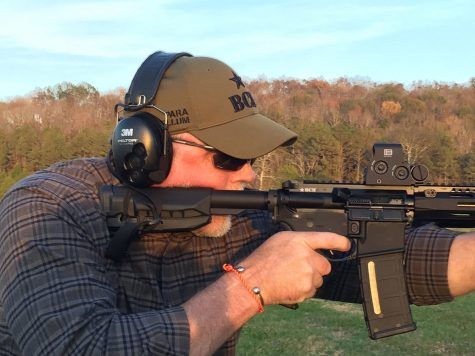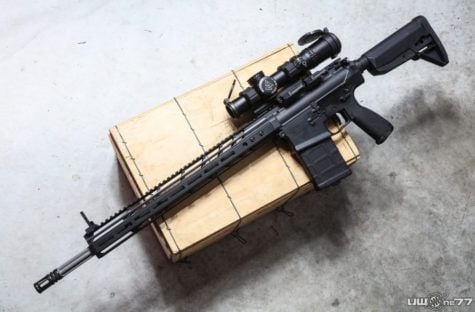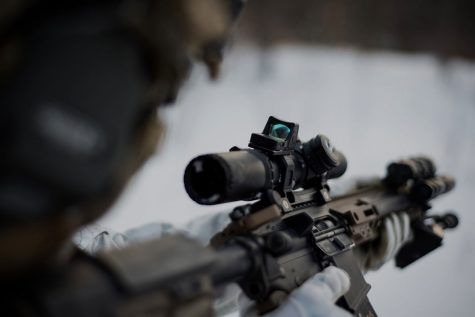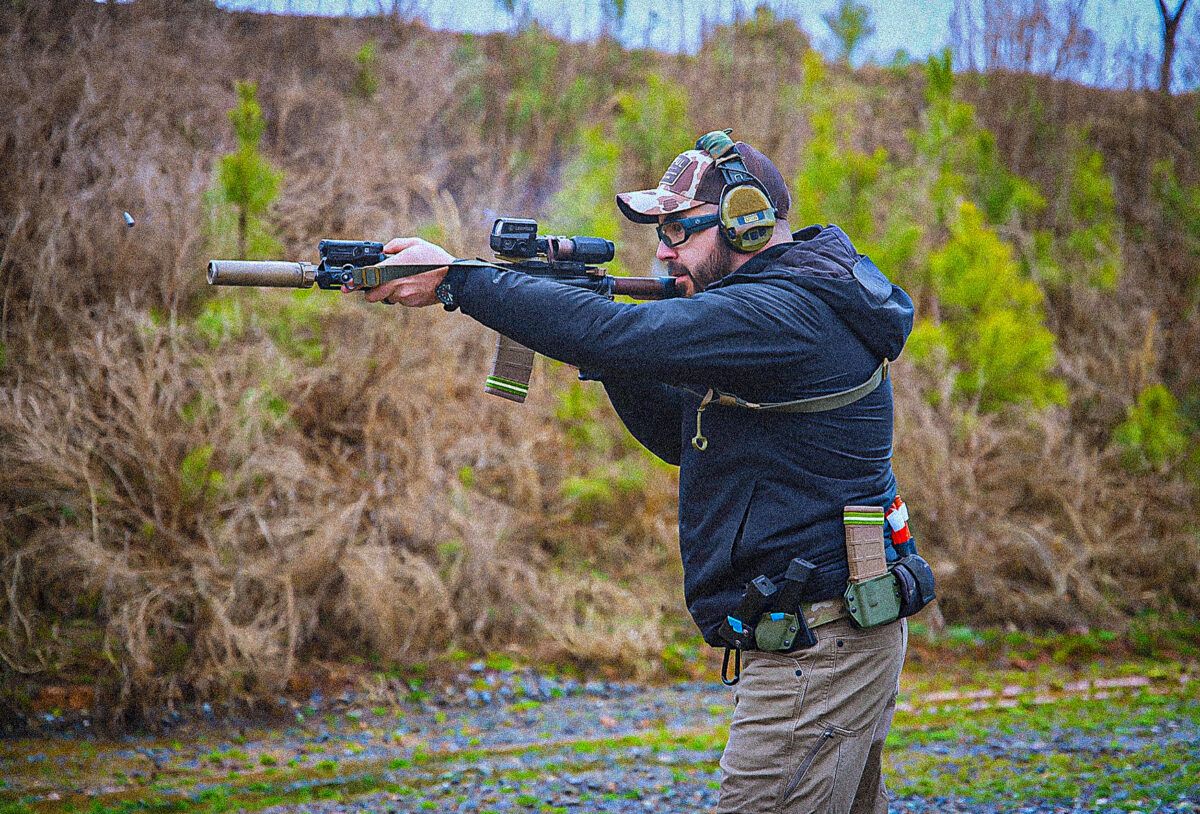
We recently reached out to Nick Young from Velox Training Group to discuss improving your shooting skills and increasing speed and accuracy with our ARs. You can read our previous interview with Nick about why firearms training is critical and what he currently thinks is the ideal set up for a defensive carbine.
Q: How is 2022 shaping up for you and Velox Training Group?
Nick Young, Velox Training Group – 2021 was a lot busier than I thought it would be. People were a lot better to me than I deserved (laughs). 2022 will be even more active. I have more than 20 classes on the books this year, and the majority are open enrollment, but I do have some PD classes in there, too.
Q: As people attend classes to improve their skills, what is a common issue you see?
Nick Young, Velox Training Group – I see a lot of people plateauing. You can imagine someone who has pretty solid fundamentals. They know how to hold the gun and can reasonably hit targets, but they don’t know where to go from there. This is the type of person I see in my classes very often. They are a reasonably decent shooter, but they have plateaued and don’t know what they need to do next to get faster and more accurate.
What I do with these shooters is try to break everything down and isolate certain things. One critical factor to improving your shooting skills is isolating accuracy. How do you get accurate? Grip, sights, and trigger press are what we need to isolate and work on to become more accurate. I think a lot of time, people will try to go fast while also trying to maintain accuracy when they’ve never explored speed before.
I do a lot in my classes where I isolate speed, and during those portions, I am not incredibly worried about accuracy. In getting a student familiar with what speed feels like, accuracy is not my number one focus on the list at that moment. I prefer to isolate and then blend everything back together. It’s almost like a roadmap to becoming a good shooter.
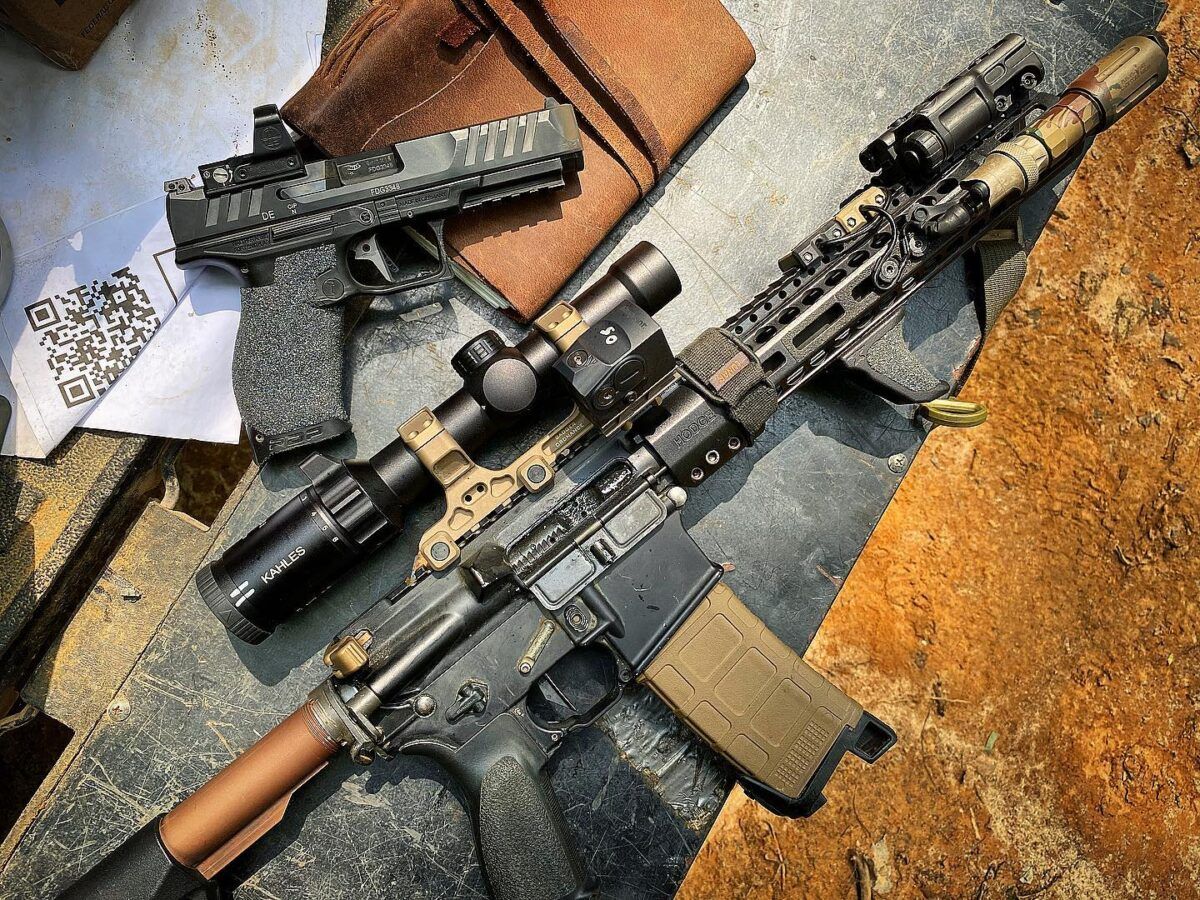
Again, improving your accuracy involves grips, sights, and trigger. Your grip is what enables recoil management. You have to make sure you are actually getting behind the gun. A lot of people like to leave their dominant shoulder back.
When you see people try to manage recoil with their dominant shoulder back instead of rolling it forward into the stock, you see muzzle rise, going up and to one direction depending on if you are a righty or a lefty. When you allow the gun to do that, you will not be very accurate, as it is challenging to figure out where the follow-up shots will be. It’s tough to predict when the rifle itself is not recoiling predictably. So, when it comes to recoil management, your readers need to remember to roll their dominant shoulder into the stock.
Q: Moving on to sights…what do we need to remember?
Nick Young, Velox Training Group – Accuracy with sights simply means ensuring they are somewhere within the given size target. Things start to get tricky at different distances. Obviously, hitting an A-zone at 7 yards is much different than hitting that same area at 50 yards. It’s as simple as looking at the target and seeing what you need to do to get the sight picture as clean as it needs to be. What does your sight picture need to look like to hit that given size target at a particular distance? To me, it’s just that simple. You need to be within an acceptable zone, but sometimes people overdo it.
Say you’re at 15 yards, you’ll want to see a fist-sized group inside of an A-zone. My thinking is that you could be going a lot faster and have an acceptable range of accuracy. I think people get wrapped up in shooting tiny groups, and those folks end up neglecting speed. On the other side of the spectrum, there are those that neglect the sights because they want to go fast. I think there should be a balance between those two approaches.
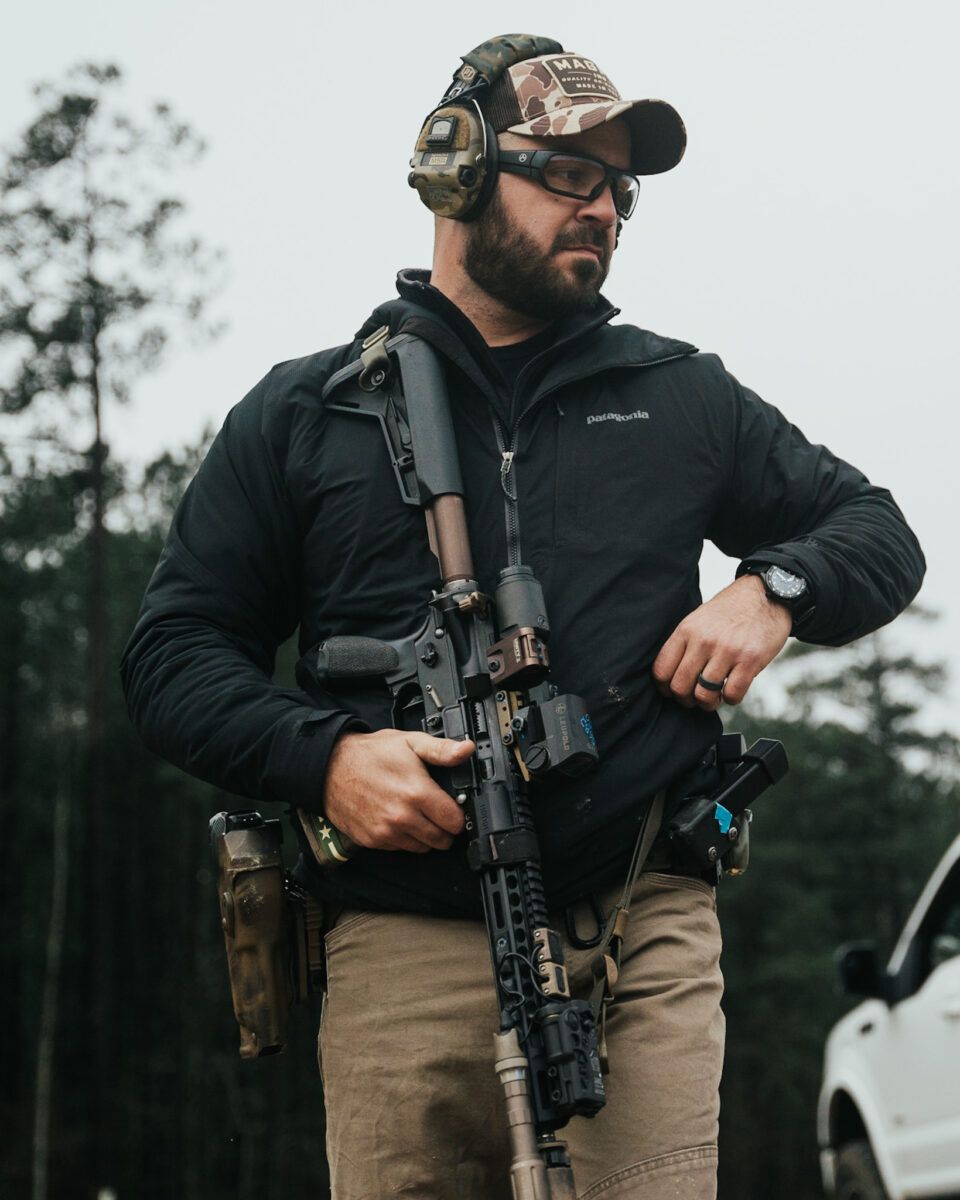
Q: Let’s talk about your approach to your rifle’s trigger and the role it plays in accuracy…
Nick Young, Velox Training Group – The way I press the trigger on different size targets at different distances will vary depending on what I am shooting at. If I have a closer target, my trigger press does not need to be as clean as it would if I were shooting a smaller target or one that was further away. If I am shooting something far away, the care that I take in the final 10 percent of the trigger press is going to be different.
I always prep the trigger 90 percent and then leave that last 10 percent of the trigger prep to basically smash through. However, the amount of care that I take on a more difficult target is much different, and there’s less of a chance for the gun to move when I do press the trigger.
Q: I’ve been told I need to be careful not to ‘slap the trigger.’ How important is it not to do that, in your opinion?
Nick Young, Velox Training Group – I’ll be honest, if I am shooting stuff up close, I am probably going to slap the trigger. I know that probably makes people feel uncomfortable (laughs), but if I can “slap” the trigger and do it quickly without moving the gun, I don’t see a problem. Where slapping the trigger becomes a problem is on a smaller target and/or at further distances, as you need to be careful how you press the trigger on those shots. You simply don’t want to move the gun off the target because of how you press the trigger.
I think slapping the trigger when we approach shooting with speed is a normal thing. I know some people don’t like it, but if you watch a 3-gun match or a USPSA match, on close-up targets, they’re slapping the trigger. The main concern with the close-up target is how fast I can get off the trigger so that I can prep it and be ready to shoot again.
The bottom line for me and how I like to break it down is that if targets are closer and easier to hit, then speed is of the essence. I am not terribly concerned about how the trigger gets pressed, but rather how fast I can get off of the trigger. On targets that are farther away and harder to hit, speed takes a backseat to actually hitting the target.
Q: What advice do you have for someone who wants to become faster?
Nick Young, Velox Training Group – Speed is really a big deal when it comes to improving your shooting skills, but I think people get confused on how to go about going fast. What I do with people is let them explore speed through dry fire. If we can explore speed through dry fire and do it consistently every day for 10 minutes, by the end of one month, you’ll be a lot faster and more comfortable at a lot faster pace. It’s like if you’re a race car driver, you can’t do all of your practice at 35 miles per hour around the track. At some point, you have to hit the gas and figure out how to go fast. When you do that enough, that pace will become pretty darn comfortable for you.
Other people will look at you and say that you’re shooting fast, but for you, it will feel fairly normal as it’s a pace that you have been working on operating at. I think exploring speed is a huge deal, but, again, you need to isolate speed, and you can’t worry too much about accuracy.
To work on speed via dry fire, you must break dry firing down into different parts. There’s a visual aspect, a gun handling aspect, and then movement. These are the three parts of dry fire that you should practice to improve your shooting skills. If I am going to do an El Presidente drill where I have three targets – two shots on each, then reload, and then two on each. What I am looking for visually when I work speed is how fast can I snap the gun to the next target and where was my dot when I pressed the trigger. I have to be very honest with myself when I do this.
In improving your shooting skills, you also want to see things sooner. What I mean by that is that if I am going to put two shots on a target and then two shots on the next, in my peripheral vision, I want to see where I am going after I break that shot. I should not have to go ‘pop, pop’ then wait for the transition, and then another ‘pop, pop.’ It should be more of a ‘pop, pop, pop, pop,’ because my visual aggression is there, and I see what is coming before I’ve broken the shot.
I like to relate it to reading a book. A good reader isn’t going to read just one word at a time. They’ll see an entire sentence or an entire paragraph. I think that target transitions are very similar to that related to speed.
Q: Any practical advice you can give on increasing speed?
Nick Young, Velox Training Group – When it comes to gun handling skills and speed, I like to pick a time on my shot timer that I need to hit. Let’s use one second as an example. I’ll try to hit that time over and over, perhaps 10-12 times. Once I have that, and in one second, I can bring the rifle up, center the dot and touch the trigger, I will try to go faster. First, I’ll try to do it and .9 seconds. Then I’ll try to do it at .8, .7, and so on. I’ll work down to .4 or .5 seconds.
If you are going to improve your shooting skills, I think it is very important to explore this kind of speed and get used to operating quickly. Once you get used to it, it becomes a new norm and doesn’t feel rushed at all. You’re able to see more and you’re not having to try to go fast, like my buddy Mark (Smith) says. You won’t have to try to go fast, because you are fast.
There are gadgets that can help, but I am not necessarily a fan. In speaking about target-to-target transitions, what tells me if I did it right is that the red dot on my optic is in the middle of the target when I pressed the trigger. As a tool, I think the optic on your rifle is probably the best tool you can use for dry fire or shooting in general. We have to be very aware of what our reticle is doing at all times, and that lets us know what we need to do as far as trigger press, how far can I snap the gun over to the next target.
Q: Anything we should know about stance and movement?
Nick Young, Velox Training Group – Stance is relative. If I had an option to only stand still, the way I would stand would be pretty specific. I personally don’t like the whole “feet shoulder width apart, straight and square to the target” approach. I typically move my strong side leg back and I am able to lean into my support side knee a little bit. I dip that knee and it throws a bit more weight into the recoil and I can shoot more aggressively like that.
As far as movement and improving your shooting skills, I think this is an area where people can get confused. People sometimes think that shooting on the move is essentially just walking towards the target. Yes, it could be, but what I am looking for when shooting on the move is getting into and out of positions efficiently.
I want to be able to get to a position quickly but also be able to land very softly so when I bring the gun up, I can shoot a lot sooner. If I run really, really fast into a position and crash into it, I am going to have to wait a second for the sights to settle before I take a shot. My process to running to a position is when running to a position, I ‘chop’ those last few steps, and as I am chopping, I bring the gun up, trying to catch the sight picture a bit sooner, so as soon as I land in position, I can start shooting.
When I am leaving a position, I think about ‘When can I start leaving?’ Will the target that I am shooting last in that position allow me to leave?’ That’s the type of movement that I try to work, and this is where the money is made when it comes to movement, not the “front, back, left, right” type of movement.
Q: Anything else you’d like to add about improving your shooting skills?
Nick Young, Velox Training Group – In closing, I just want to stress how important dry firing is regarding improving your shooting skills. Almost everything that we’ve gone over today can be done in dry fire. I would argue that it might even be better to explore these things during dry fire. A lot of times when we’re at the range shooting, shooting the gun is clouding what is going on. If you simply dry fire 15 minutes a day and shoot a few rounds a week, you’re well on your way to becoming very squared away. The key is that the 15 minutes you spend is very purposeful. Imagine that one day you work on the speed of your reloads for that 15 minutes. Time spent doing that is huge.
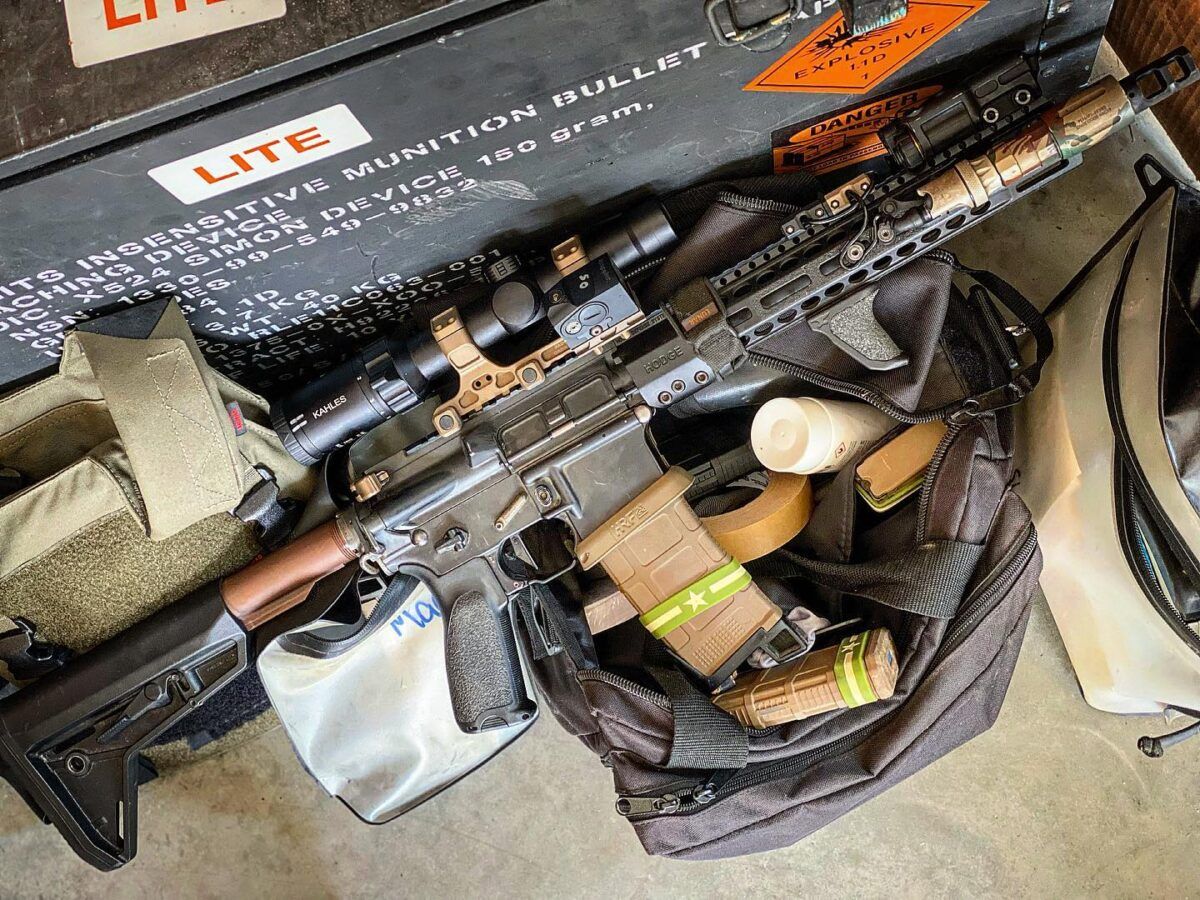
I’ve done a lot of competing in my life, and when I first set out to do USPSA, I made it a point to dry fire every single day. I did that, and the difference in my before and after is night and day. I can see it clearly in videos that I shot of myself practicing. I can operate so much faster, but it feels normal to me. It’s a growth that happened due to dry fire. I’m not someone special, it’s just the amount of work you can put in that will make a difference for you and your speed and accuracy.
###

